How to attract butterflies to your garden – expert tips on planting picks and other ways to welcome these winged wonders
Learning how to attract butterflies to your garden is beneficial for many reasons – and this practical guide makes it easy to get started
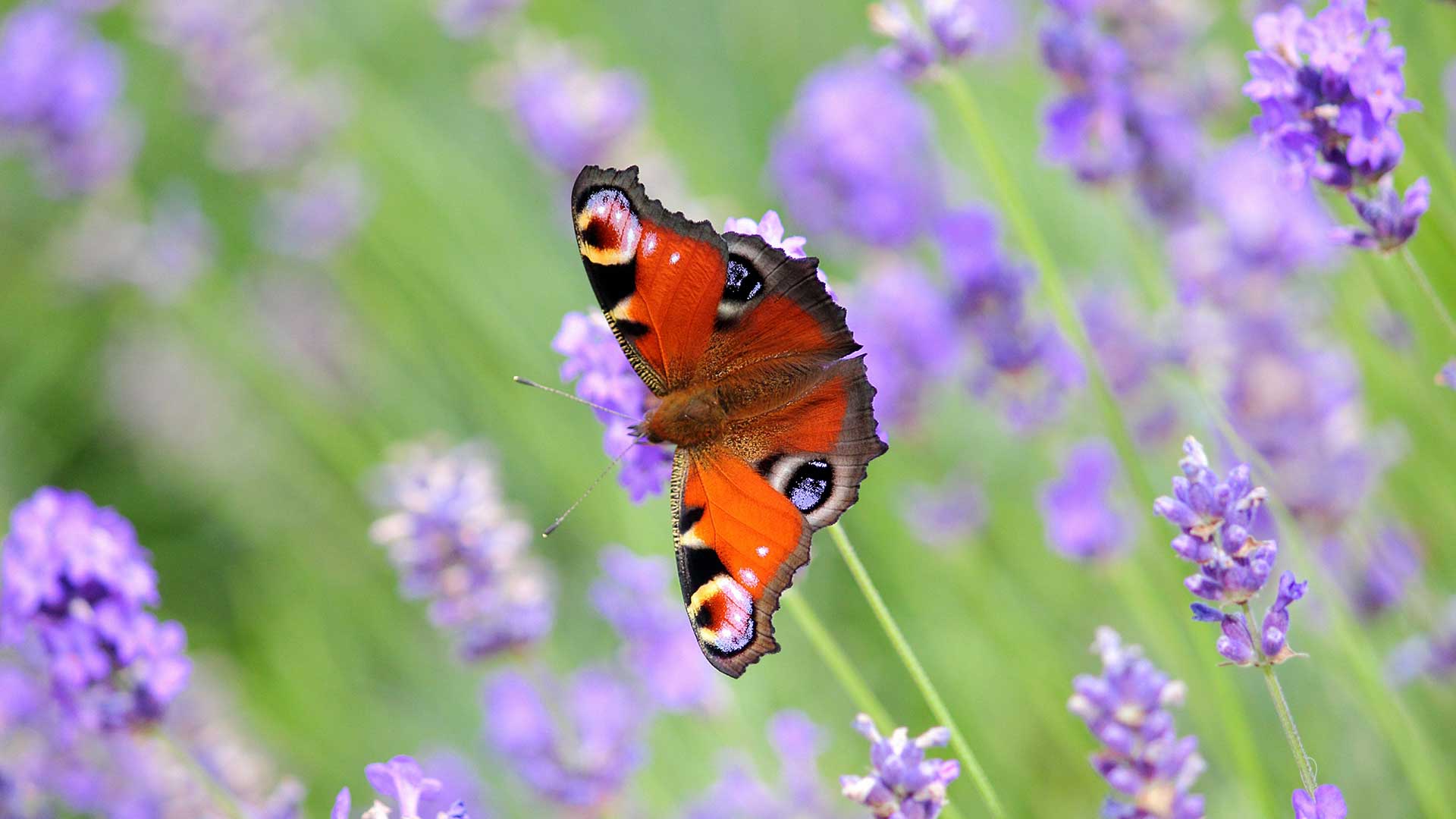

The summer months are an ideal time to learn how to attract butterflies to your garden. Whether you have a tiny courtyard or acres of land to play with, a few simple steps can create a haven for these wondrous creatures.
Welcoming more wildlife to our outdoor spaces is an enduring garden trend for good reason. Not only does it help support our local environment, but it also makes our gardens more beautiful, joyful, and educational places to spend time in.
For adults and children alike, watching a colourful butterfly flit to and fro can be a simple yet magical moment. And, attracting them is easier than you might expect. Below, you'll find plenty of advice from wildlife experts, including tips on what to plant and what to avoid.
An expert guide: how to attract butterflies to your garden with plants and more
"Marvelling at a butterfly’s curled tongue (or ‘proboscis’) as it feeds at a windowbox, or trying to catch a photo of painted wings before they flit away – all of this helps connect us with our natural environment, offering the chance to slow down, to look, and to appreciate the smaller things," says Jenny Shelton from The Wildlife Trusts.
"It’s no surprise that spending time connecting with nature has been proven to reduce stress and improve our physical and mental health." Sophie Hall, Communications Officer at Butterfly Conservation, highlights that counting butterflies can reduce anxiety by an average of 9%.
Of course, supporting butterflies isn't just beneficial for us gardeners. Jenny also notes how they're important pollinators and vital links in the food chain. "Wildflowers depend on them for pollination, and blue tits have a voracious appetite for caterpillars – a brood of 10 chicks consumes 1000 caterpillars a day!" she says.
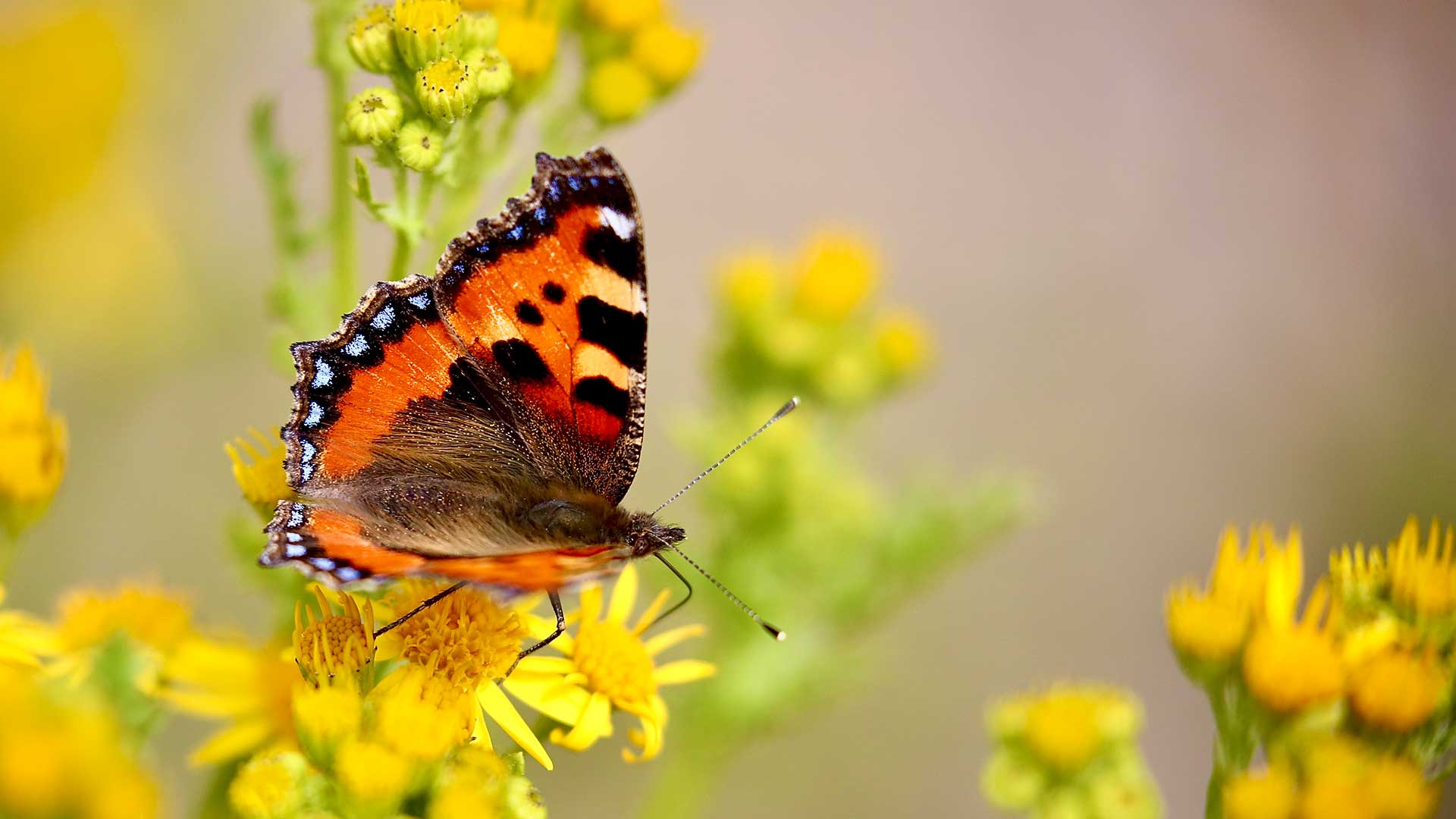
Many flowers will attract these insects
However, more than half of UK butterflies are in long-term decline, Jenny continues – "and last year was a particularly bad year for some once-familiar species like the small tortoiseshell, common blue and large white.
Sign up to our free daily email for the latest royal and entertainment news, interesting opinion, expert advice on styling and beauty trends, and no-nonsense guides to the health and wellness questions you want answered.
"Now more than ever, butterflies need our help," Jenny says. "By gardening with butterflies in mind, you’re actively helping these beautiful creatures and nurturing the wider ecosystem.
Our gardens, when added together, make up a habitat that’s larger than all the UK’s National Nature Reserves. It’s living proof that small, individual actions can add up to something amazing."

The Wildlife Trusts’ Jenny Shelton is a communications professional with 10 years’ experience working in the environmental charity sector. From writing about the mysteries of bird migration to speaking about rare birds on breakfast television, taking part in community nature projects and becoming her local radio station’s go-to wildflower expert, Jenny is passionate about sharing her knowledge and inspiring others to love and protect the wild world around us.

Sophie Hall is a communications officer at Butterfly Conservation, creating content to inspire people to want to protect butterflies and moths. Sophie particularly enjoys sharing her love of wildlife and gardening to encourage people to create spaces at home with nature in mind, sharing experience and tips from her own butterfly-friendly garden in Norfolk.
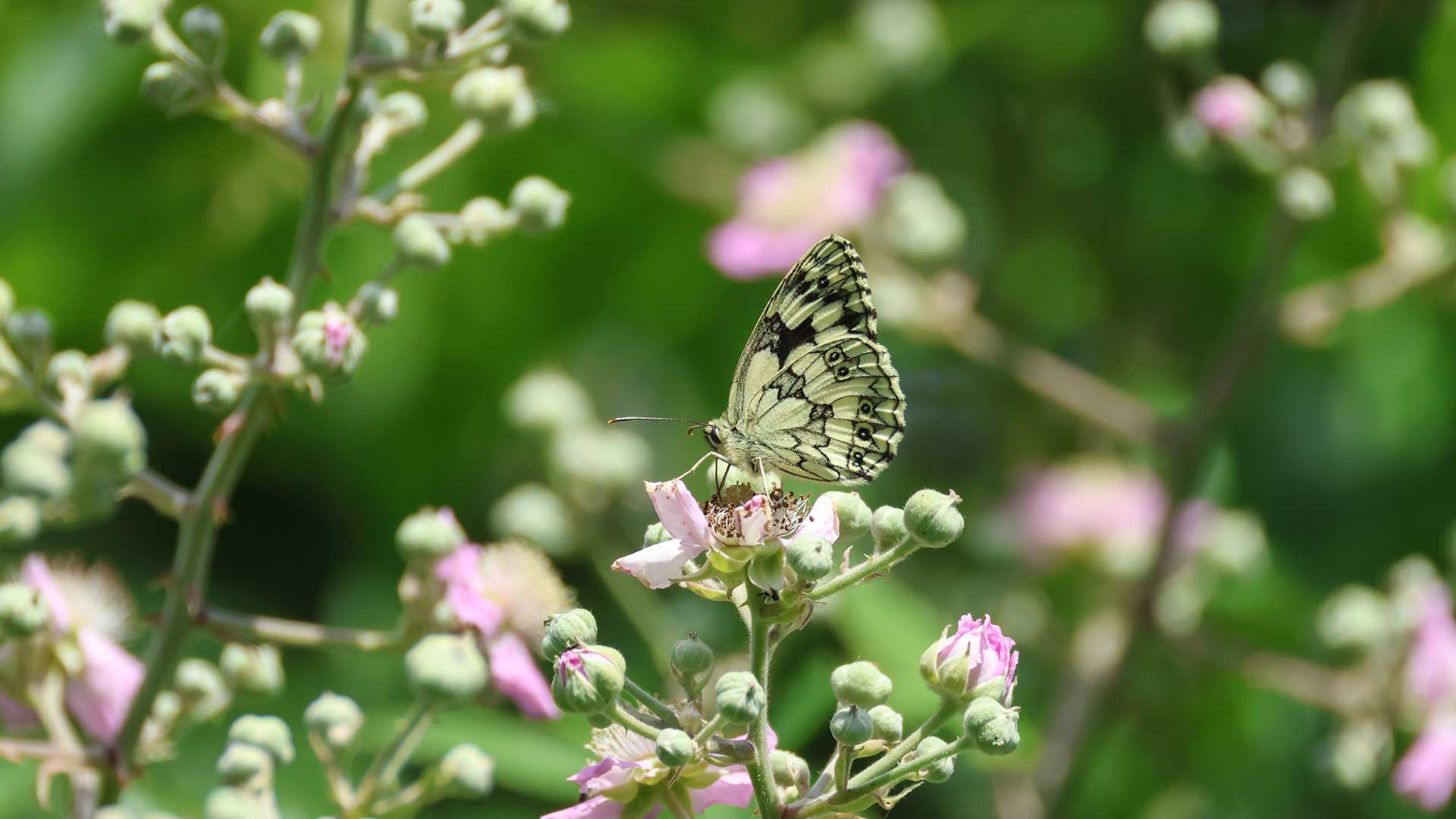
The marbled white butterfly
What to plant to attract butterflies
Choosing nectar-rich, pollinator-friendly plants will entice these winged wonders into your garden, and many are suitable for patio pots. "Planting a mix that blooms across the seasons gives butterflies a steady source of food as well as making your garden look just fabulous," says Lynne Lambourne, Gardena sustainability ambassador.
For an easy starting point, Dr Emily Attlee, conservation scientist and co-founder of Seedball, recommends Seedball’s Butterfly Mix (available from Amazon). This includes a carefully selected blend of wildflower seeds known to attract and support a wide range of UK butterfly species, she explains.
Alternatively (or additionally), you could choose a mix of the following plants, recommended by other experts:
- Salvia: These are Jenny's go-to plants for attracting butterflies. "There are almost endless varieties in various gorgeous colours: from deep velvety purple to cheerful blues and romantic pinks and reds." Try the award-winning "Caradonna" salvia from Crocus for tall, purple spires.
- Verbena bonariensis: This is another must-have for your pollinator-friendly garden, according to Jenny. "Less invasive than buddleia, these tall purple plants are easily slotted into sunny borders."
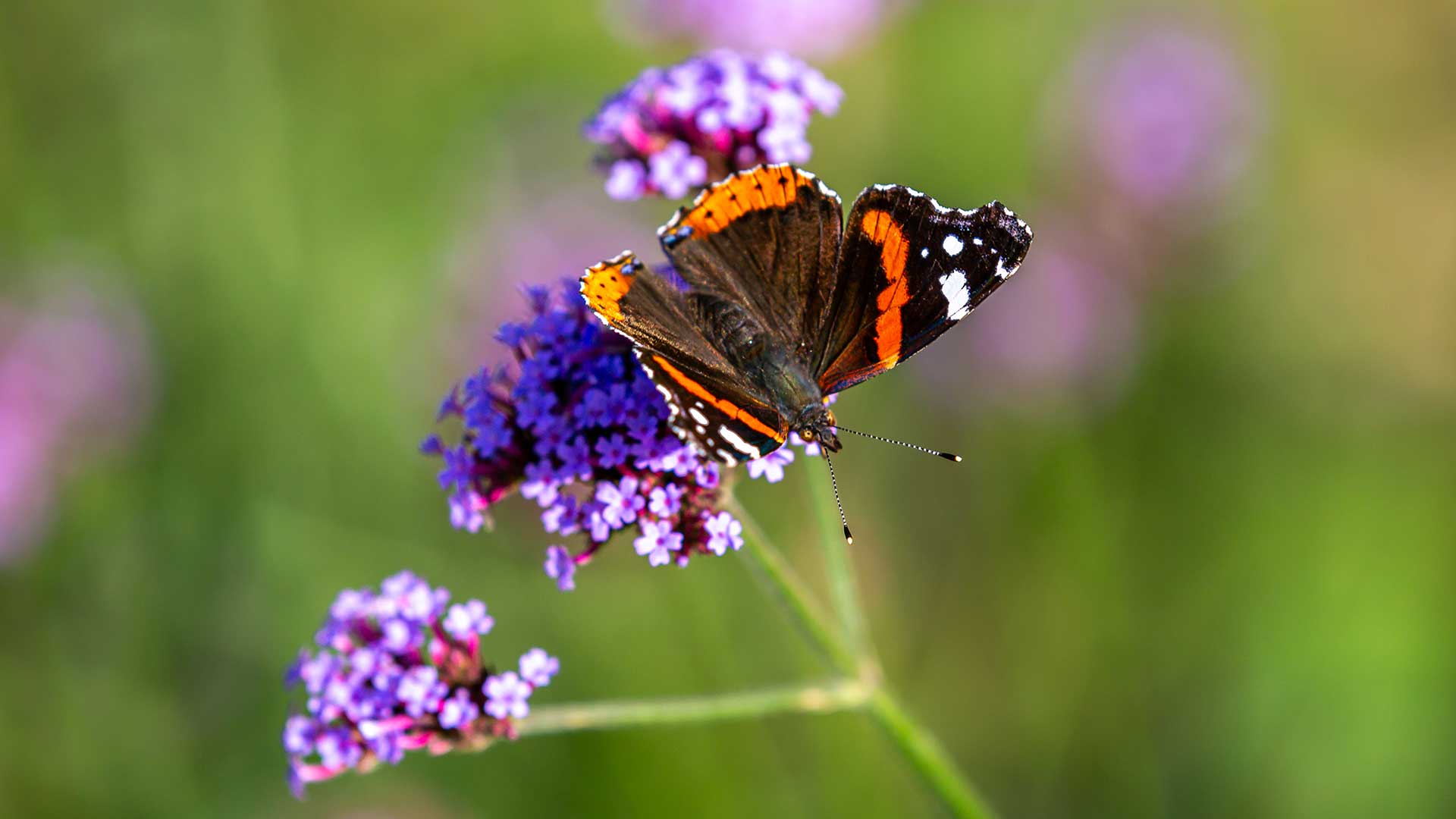
A red admiral butterfly on Verbena bonariensis
- Marjoram: Often a good choice for a ground cover plant, this fragrant perennial is recommended by Sophie. "Seven different types of caterpillar feed on wild marjoram, including those of the burnished brass and mint moths," she says. "The dainty, purple flowers are a valuable source of nectar for many different butterflies and moths, including green-veined white, peacock and ringlet butterflies."
- Lavender: "This vibrant and aromatic plant is not only a garden classic, but it also smells wonderful and butterflies love the nectar-rich flowers," says Sophie. It's perfect for a cottage garden or Mediterranean garden scheme.
- Sweet alyssum: "The abundance of fragrant flowers and long flowering period make it a great nectar source for a variety of adult butterflies and moths, as well as other insects," says Sophie. Try planting "Carpet of Snow" seeds from Thompson & Morgan for pretty white blooms.
- Nasturtium: Helen Bostock, RHS senior wildlife specialist, says this is an easy-to-grow annual that's great for sowing with children. "It is a caterpillar plant of the large and small white butterflies," she says – "so, if you plant it near your vegetable garden, it will help keep them off your brassicas."
- Red valerian: This plant is a favourite food of the hummingbird hawk-moth, says Jenny. "Traditionally seen in more southerly parts of Europe, hummingbird hawk-moths are appearing more frequently in the UK as our weather warms. With orange wings and a chunky, chequered body, these magnificent beasties usually turn up on sunny days in late summer and autumn, hovering and darting about exactly like their namesakes." Red valerian plants are available from Crocus.
If you're looking for more plants to support moths, Emily recommends planting pale or white night-scented flowers such as evening primrose or jasmine. "Their evening fragrance draws in moths after dark, helping to sustain these lesser-seen garden heroes."
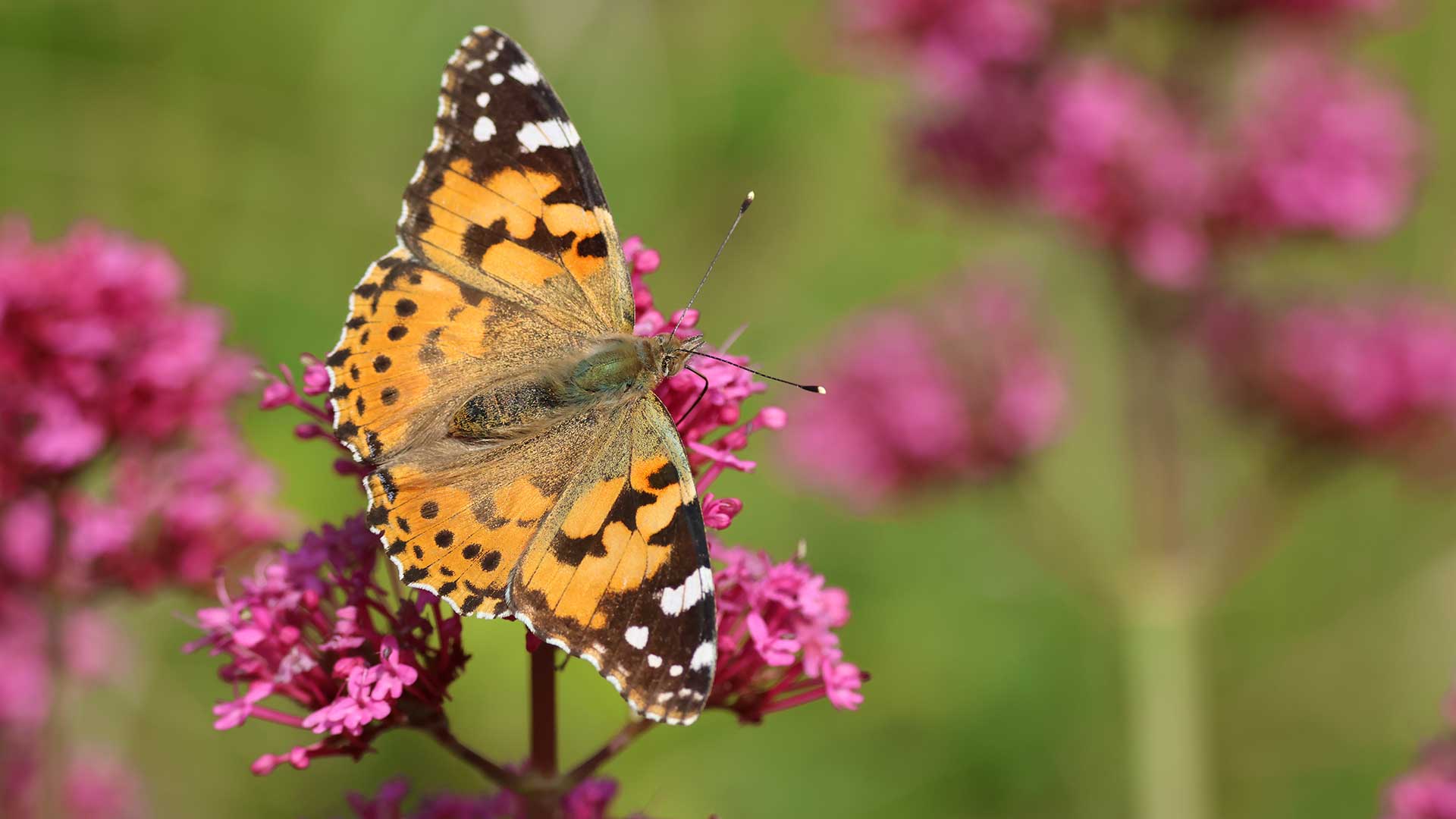
A painted lady butterfly on red valerian flowers
- Thistles: Jenny says if you let thistles bloom, you’ll realise how delicious they are to butterflies. "Painted ladies are particularly fond of these – both as adults and caterpillars." She adds that hers are always covered in bumblebees, too. Try "Trevors Felley Find", an ornamental thistle from Crocus, which has late-summer flowers.
- Ivy: "Ivy provides butterflies and other pollinators with nectar through into the autumn months, as well as a place for overwintering butterflies and caterpillars to shelter," Jenny says.
- Sedums: Sedums are drought-tolerant once established and make great plants for a rock garden. Sophie recommends the "Herbstfreude" variety (which is available from Crocus), but says that many sedums flower all the way through the summer and even into autumn, providing a source of late nectar for butterflies which are still flying later in the year.
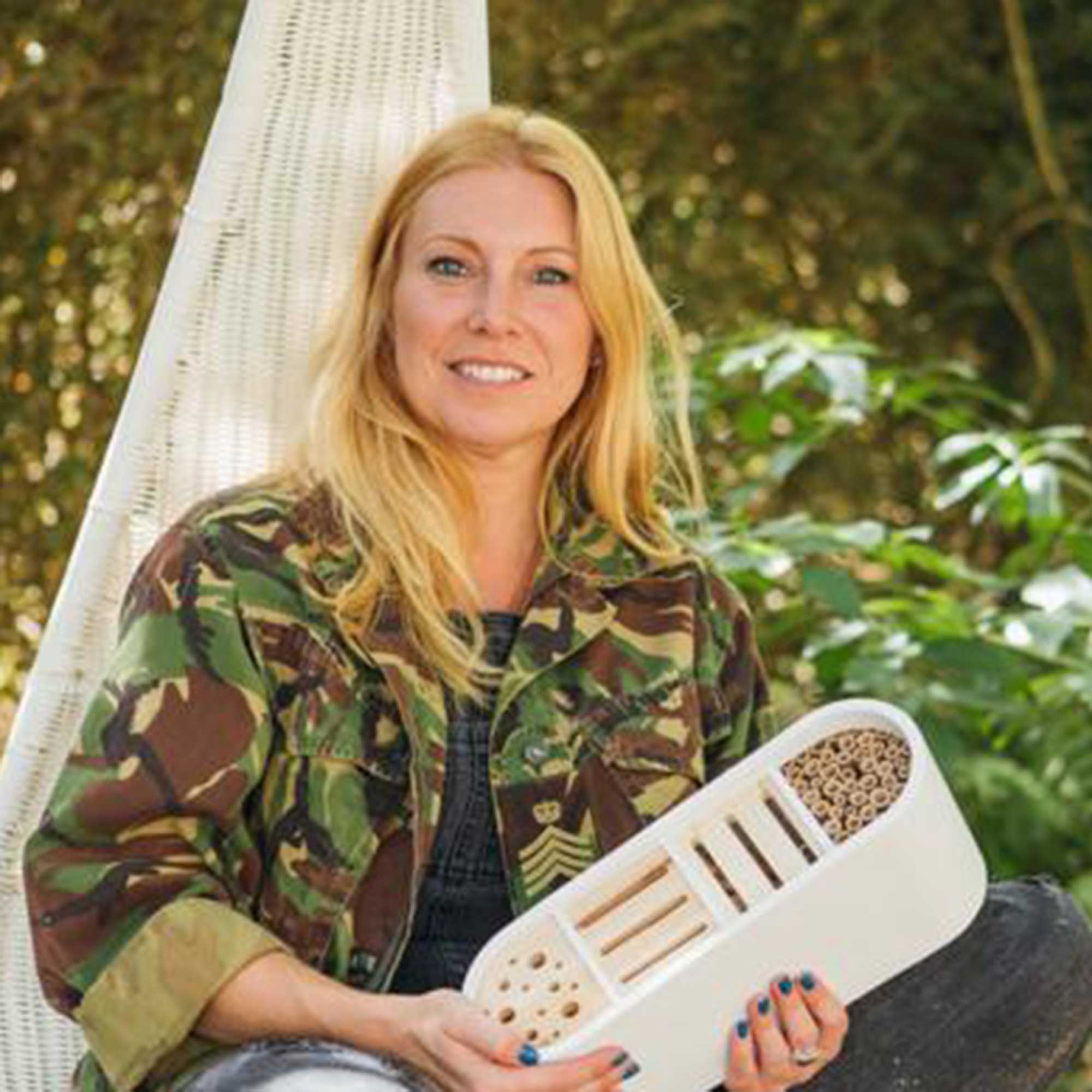
Gardena sustainability and DIY ambassador Lynne Lambourne inspires sustainable living through her gardening. She teaches people to rethink their garden spaces, including using their gardens to grow their own food, increase biodiversity, and help the climate crisis.
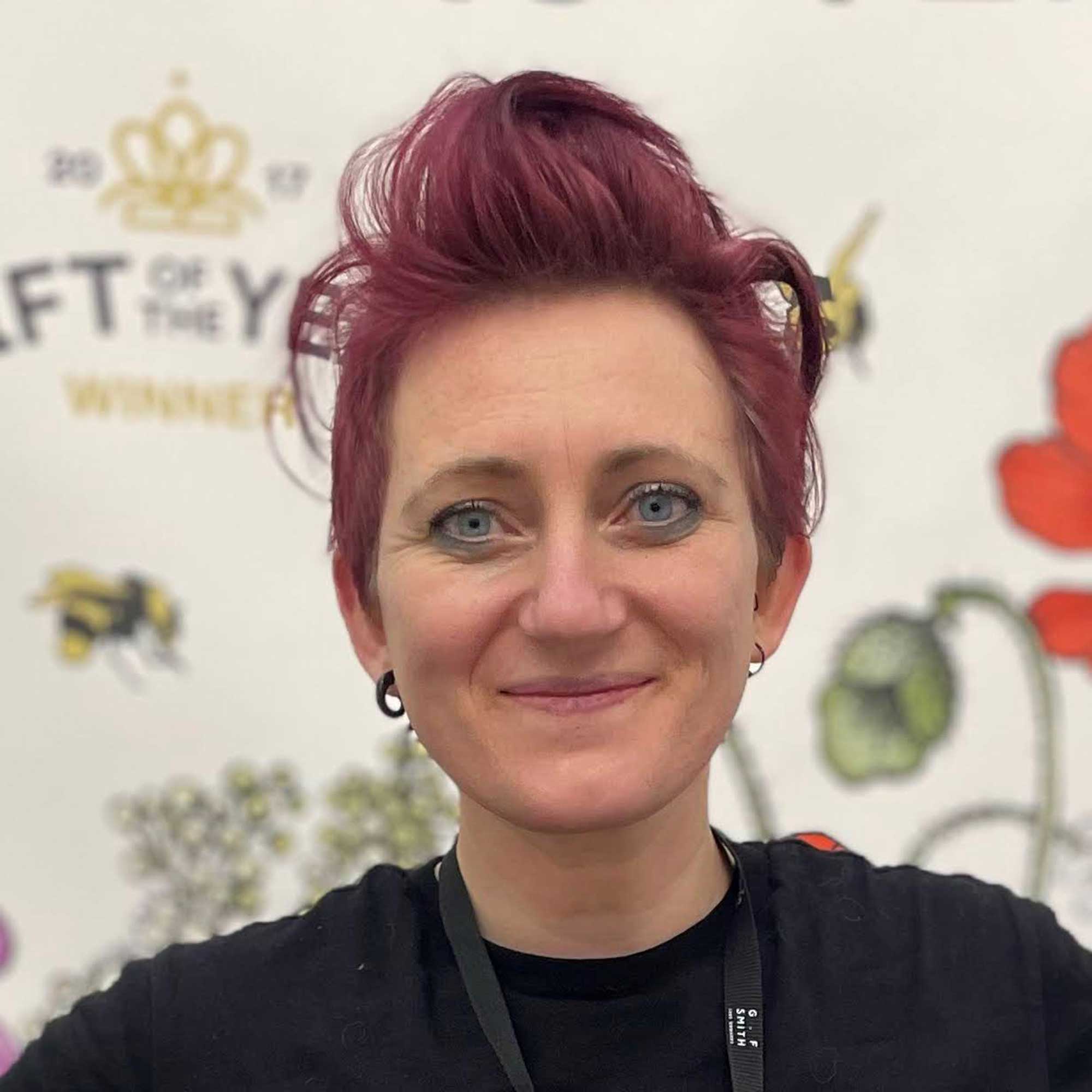
Dr Emily Attlee is a conservation scientist, and along with her partner Dr Ana Attlee, founded Seedball, a multiple-award-winning, not-for-profit organisation. Ana and Emily’s mission is to help increase the abundance of British wildflowers and wildlife that depend upon them by encouraging people to maximise the outdoor space available to them and scattering seed balls of native flowers.
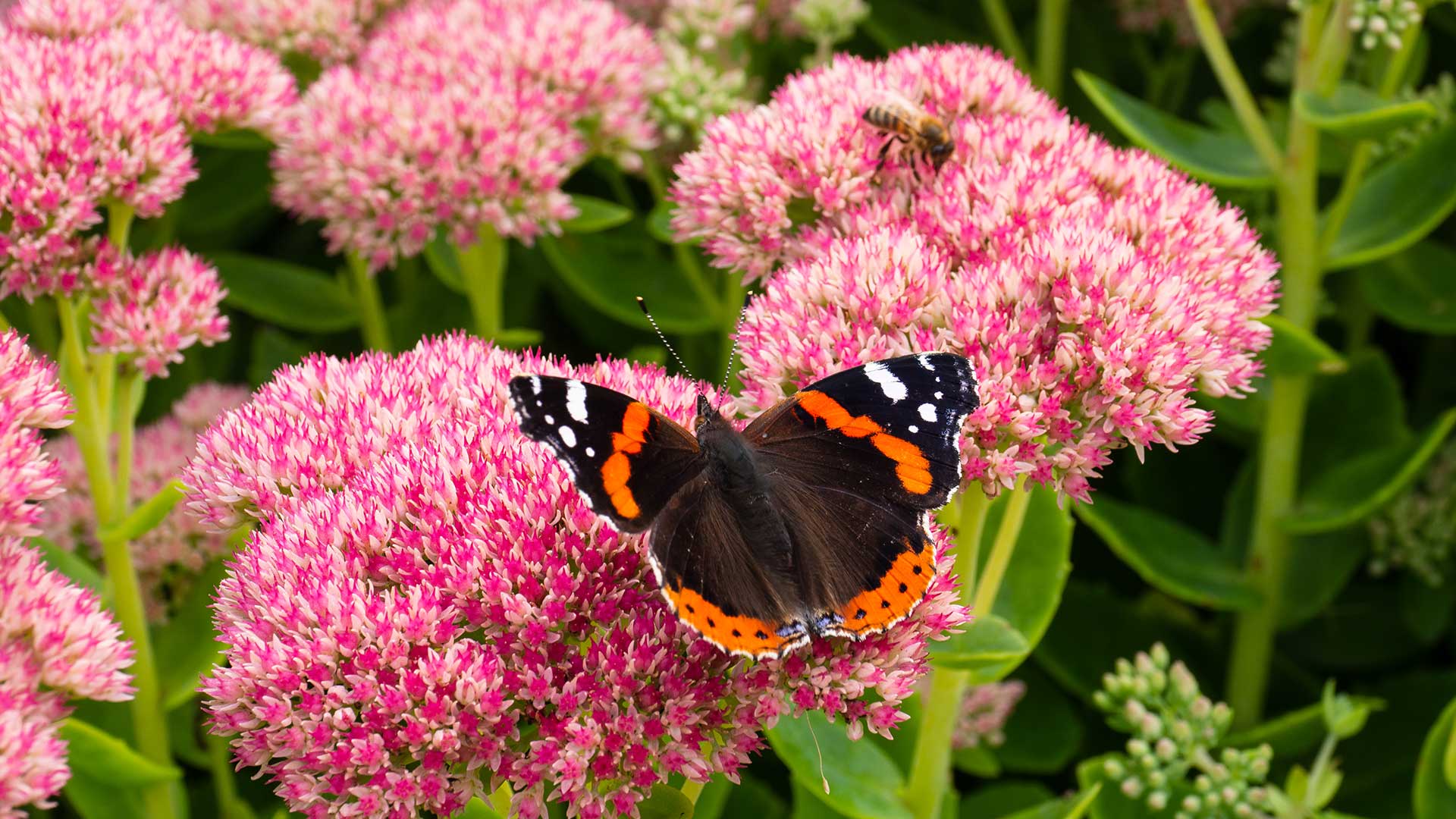
Sedums are low-maintenance plants that attract butterflies and bees
Other things to consider to make your garden butterfly-friendly
While picking suitable plants is a key part of learning how to attract butterflies to your garden, there are other steps you can take.
Sophie says, "As well as food, butterflies and moths need spaces to shelter and roost. Some species of butterfly and moth overwinter as adults and need safe places to do that."
She recommends creating log piles, leaving your leaf litter where it is, and avoiding cutting flower stems until the following spring, as some species like to overwinter in them. If you have a larger space, you could also consider adding a native hedge, she says.
Taking inspiration from the rewilding trend can create a more welcoming space for butterflies. As Jenny says, "One of the best things you can do for butterflies is to do nothing.
"Let part of your garden grow wild," she says. "This could be an area around the base of a tree, or a designated ‘mini meadow’. Encouraging a variety of native grasses, flowers, shrubs and trees to flourish will feed caterpillars as well as the adult butterflies, turning your garden from a pollinator pitstop to a burgeoning butterfly paradise."
Lynne also highlights this point, as she believes the abundance of butterflies in her garden is thanks to a patch she's left wild for the past few years. "I stopped mowing it, and it’s slowly transformed into a haven of wild grasses and native flowers. This area is now a magnet for pollinators – a small, buzzing meadow in my own backyard."
Top tip: Want to give your tiny winged visitors an extra sweet treat? Helen recommends leaving out slices of ripe fruit and banana skins for red admirals and other butterflies.
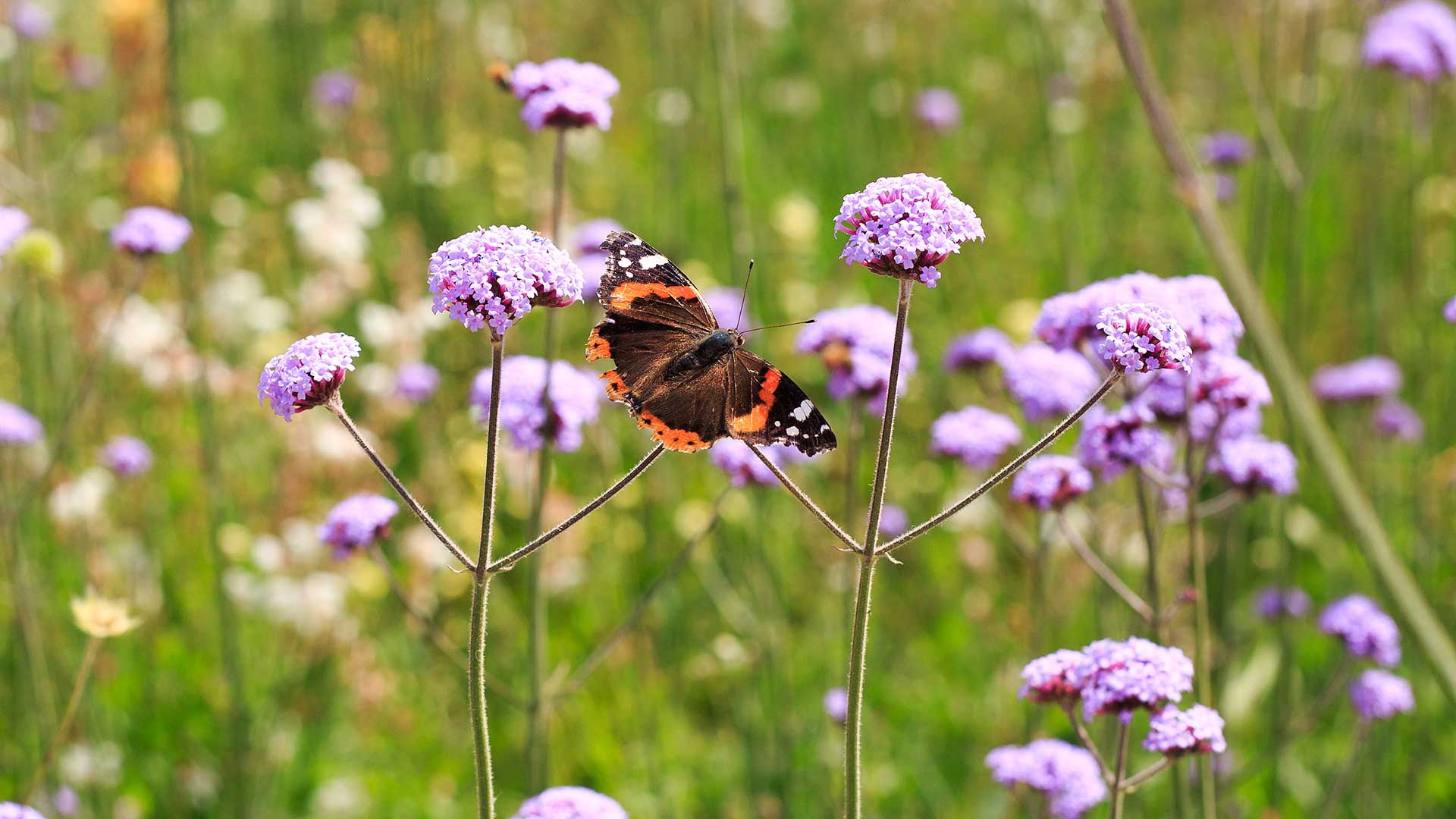
Consider a wilder approach for areas of your garden
FAQs
What should you avoid doing when trying to attract butterflies to your garden?
"Pesticides are one of the main reasons for the decline in British butterflies in recent decades," says Jenny. "Taking a natural approach to gardening will do wonders for your butterfly population."
Helen also urges gardeners to "ditch the sprays". "Yes, there may be a few holes in leaves from their caterpillars, but these are a small price to enjoy such wonderful insects and there are many other species dependent on caterpillars to feed themselves or their young," she says.
Lawn care can play a part, too. Sophie says it's better for butterflies if you can avoid mowing your lawn too early in the summer, as many common garden species lay their eggs on grass. "Either save mowing until September or only mow patches or paths through your lawn to keep some refuges for butterfly eggs and caterpillars," she advises.
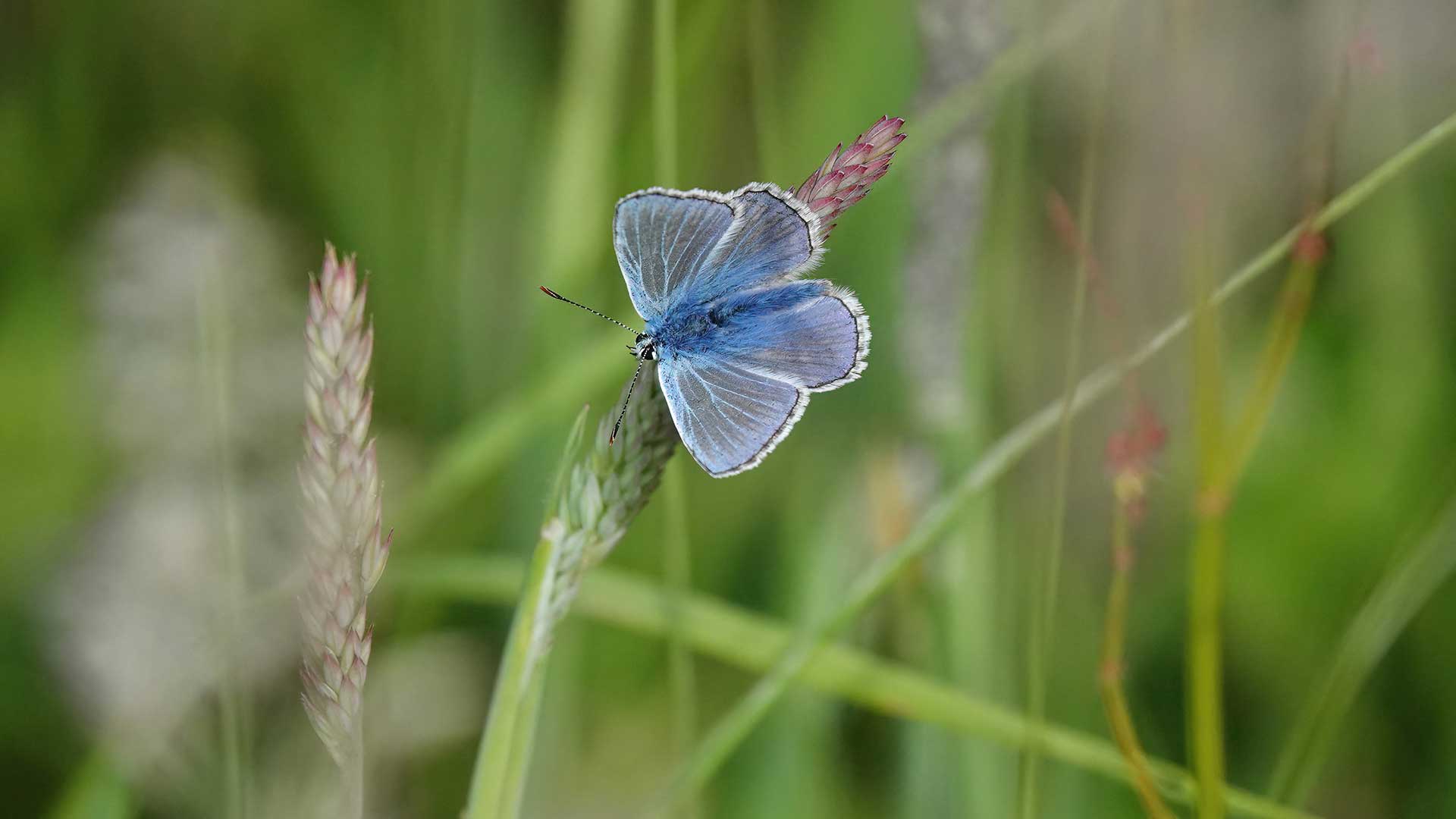
Avoid chemical pesticides to encourage a healthy ecosystem
Should you provide water for butterflies?
Lynne says it's important to remember that butterflies, just like birds and bees, need water. However, this needs to be shallow, rather than offered in deep bowls. "Try a small dish with stones or pebbles in it – the butterflies can land safely and sip water without risk of drowning. Keeping it topped up in warm weather is a lovely way to support them."
Now you know how to attract butterflies to your garden, why not check out our guide on how to attract birds, too? After all, as Lynne says, "There’s something so grounding about seeing the garden not just as your own, but as a shared space – a small sanctuary for all kinds of life."

The garden was always a big part of Holly's life growing up, as was the surrounding New Forest where she lived. Her appreciation for the great outdoors has only grown since then; she's been an allotment keeper, a professional gardener, and a botanical illustrator. Over three years ago, Holly started writing about plants and outdoor living full-time, first for Gardeningetc.com and now for popular lifestyle titles such as Homes & Gardens.
You must confirm your public display name before commenting
Please logout and then login again, you will then be prompted to enter your display name.